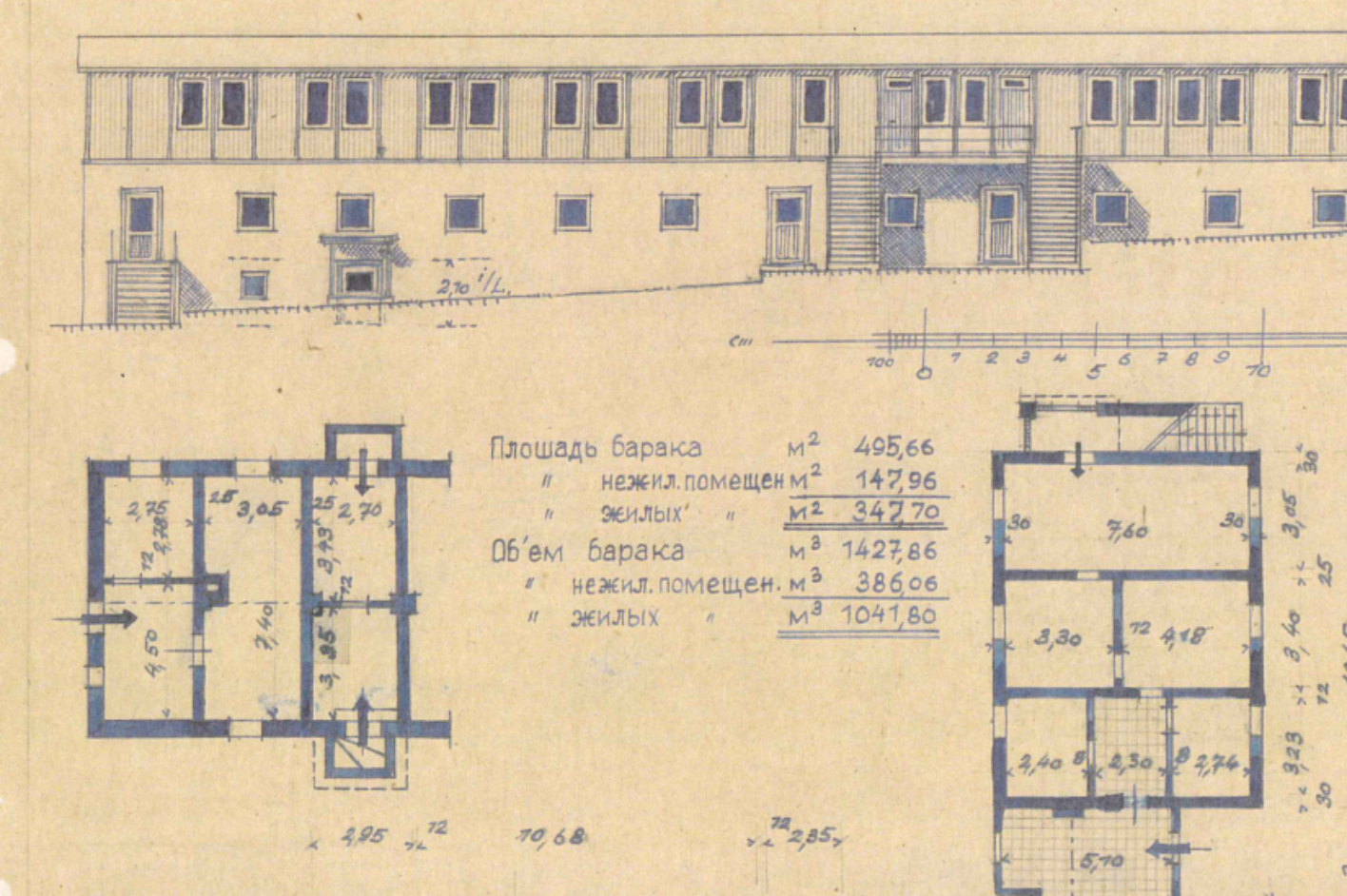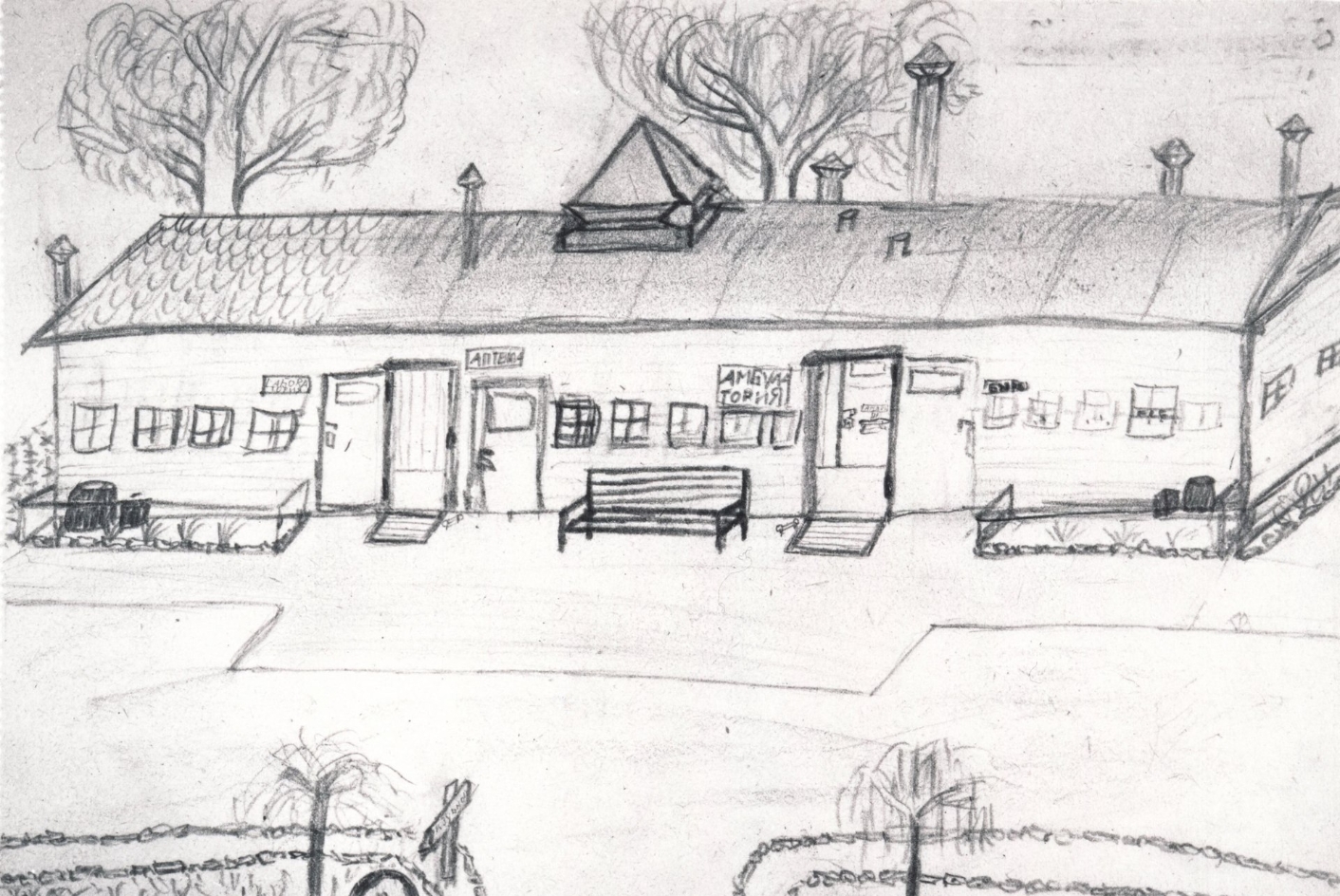This is where imprisoned German doctors and nursing staff worked. The infirmary included a women's infirmary, a dental unit, an infirmary kitchen, an internal medicine department, a surgical department, a tuberculosis ward, a psychiatric area, a pharmacy, a laundry area, and a service building.
Due to a constant lack of medication and medical supplies, it was only possible to mitigate the effects of disease but hardly heal patients. Sick inmates suffered from the effects of malnourishment—which included dystrophy, tuberculosis, and dysentery—and unsanitary conditions. The number of inmates infected with tuberculosis rose steadily, causing numerous additional barracks to be assigned to the infirmary. When the camp was shut down in 1950, the final report of the Soviet administrators noted 2,000 of 10,000 inmates as having open or closed tuberculosis.



